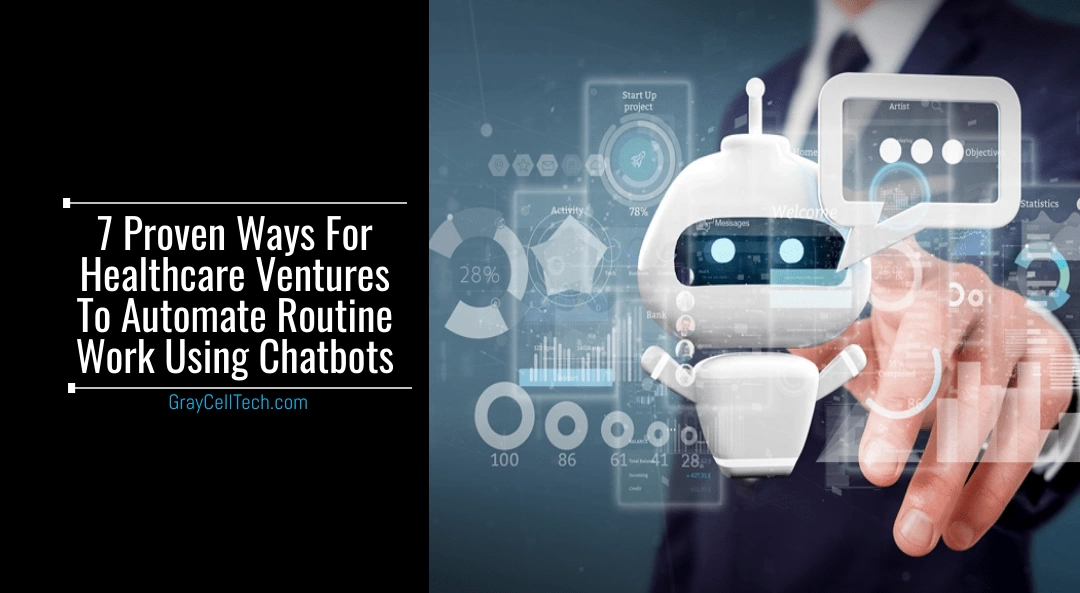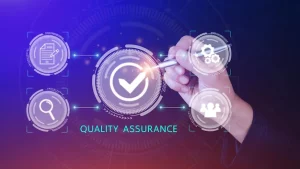Advancements in AI (Artificial Intelligence) and ML (Machine Learning) have increased the popularity of chatbots across various sectors, especially in the healthcare industry. The healthcare sector is pacing up with tech trends to stay updated with the market needs. In the recent past, we have witnessed the rise in the healthcare bots; and, we will continue to witness this rise in the future.
“By 2025, the global market of Healthcare Chatbots is estimated to grow up to $703.2 million.”
The healthcare industry utilizes chatbot technology to help medical professionals as well as patients. Let’s understand how chatbots automate the routine tasks of healthcare organizations.
How Chatbots Are Helpful For Healthcare Ventures
- Offer Fast Access to Relevant Information
Chatbots provide instant access to information and documents. They also exchange data inside the healthcare organizations whenever required. Employees can quickly use these chatbots to search for any papers or information.
- Keep Employees Engaged
Chatbots keep employees engaged and updated with company news and other relevant information. They can send useful articles or updates of the healthcare company and also send surveys to collect employees’ feedback and analyze them. Bots eliminate clutter and ensure that employees won’t lose any mail in their inbox.
- Automate Employee Onboarding Process
We know that new employees are required to fill and sign multiple documents such as legal documents, non-disclosure agreements, forms, and contracts. So, chatbots can help in assisting them with documents, tips, and user guides. Bots can ask the required questions to new employees and help them fill the necessary papers. As per requirement, the bot can then provide the complete document to the new employee for signing or send it straight to the HR department. Besides, the bot can answer the employees’ queries, i.e., FAQs. It helps the new employee who needs information/instructions.
- Perform Small Administrative Tasks
Chatbots can perform multiple tasks such as scheduling meetings, booking conference rooms, booking days off and sick leaves, and many more. So, hospital systems implement bots for their patients.
Bots can also act as an administrator. They allow medical staff to search for patients’ medical cards, prescription history, and previous visit reports quickly and easily. However, the medical professional must ask the exact question from the chatbot, such as what was the sugar level of the patient 1 week ago?
- Offer Personal Assistance to Patients
Chatbots can send reminders about pills and procedures to patients, track their symptoms, and diet. Once the bot collects patients’ data, it prepares a summarized report and sends it to the doctor. We can say that chatbots act as a personal nurse.
- Provide Medical Recommendations
In healthcare organizations, chatbots are used to provide patients with wellness tips and recommendations. They can advise on medication such as dosage, restrictions, side-effects, and suggestions. So, a patient can ask for help from bots related to his medicines (how to take them, whether they can be mixed with any other drugs) and get an instant reply.
- Offer Assistance to Doctors
Chatbots and voice-assistants can also help doctors for creating documents or reports during the patient’s examination. Voice-assistants can write drug prescriptions, summaries of the visit, or any other paperwork to help general physicians (GPs) so that GPs can get more time for doing things that need their attention.
Healthcare Chatbot Development Process

Let’s go through the steps of developing a healthcare bot. The chatbot development process consists of the following four steps:
- Research & Analysis
- Find a User Persona
- Plan Requirements
- Build a Prototype
Research & Analysis
The first step requires you to highlight the reason for chatbot implementation. In this way, you can understand the problem solved by the chatbot. For better understanding, you must ask the following questions to yourself:
- Which problem your chatbot would solve?
- Why should you develop a chatbot?
- What will your chatbot exactly do?
Your chatbot must directly solve the issue of end-users or optimize processes inside your healthcare organization. You must keep in mind to focus on one specific problem rather than overloading your bot with unnecessary additional features.
Find a User Personal
After doing research and analysis, you must think about the user persona to create the personality of your chatbot. Chatbot personality is the way the end-user imagines a chatbot while texting it. You can make your chatbot a friend to users or anything that you wish it to be (serious, witty, professional, etc.). You can give unique features (like character and emotions) to your chatbot to set it apart from the rest.
You can understand your ideal user better through the following questions:
- What is the average age of the end-user who will be communicating with your chatbot?
- What is the job of the end-user?
- Does the user works in the office and uses a laptop?
- What are the interests of the end-user?
- What problems can occur in the life of the end-user so that your chatbot can become the best solution for him?
Plan Requirements
Once you have built the chatbot personality, create a chatbot project plan and requirements. Before creating chatbot requirements, you need to again analyze your target audience and research their habits, behavior, preferences, motivation, and goals to understand problems that the users want a chatbot to solve.
While planning requirements, you must concentrate on bot use cases (write what your bot will do), bot user stories (describe chatbot as a user), and bot business goals (mention the business goal for your chatbot).
Build a Prototype
The last step is to check if your plan works. You can now develop your chatbot prototype. Even if you do not have the coding skills, you can develop the chatbot prototype in two different ways.
- By using chatbot building platforms
- By hiring a chatbot development team
You can choose an option based on the chatbot you want to build, your business requirements, and resources such as time and money.
Key Points in Healthcare Chatbot Development

#1. Security
The security of a patient’s personal information is an essential factor. Therefore, the healthcare industry must practice the best security measures (such as on-premise deployment and data encryption) to protect the patient’s data. Your healthcare chatbot must cater to the GDPR or HIPAA compliance.
#2. Natural Language Processing (NLP)
Your healthcare bot must have a vast database to become like an expert and must know different variations of medical terminology.
You can create a database in two different ways:
- Train your chatbot with available data
You can use existing data from your customer support. For this, you need to review call logs and scripts, emails, FAQs, and find previous interactions with your customers. Then, identify the most repeating questions or problems that users face and consider the words, phrases, or questions that your chatbot needs to understand.
- Train your chatbot using pre-made datasets
You can use readymade datasets when you want to train your chatbot’s NLP fast or when you don’t know how to start. Pre-made datasets have questions and answers that help you cover fundamental topics. However, you must upgrade the vocabulary of your bot. Analyze how end-users interact with the bot and accordingly adjust your chatbot’s voice tone or expand its vocabulary based on real feedback.
#3. Cross Checking
Medical chatbots are not built to diagnose patients. Rather, they can gather medical information and transfer it to the doctor. In this way, the patient can be diagnosed faster and in a more efficient manner. Healthcare chatbots can ask questions from patients and write symptoms and medical notes according to their answers. Therefore, your chatbot must ask multiple questions and cross-check answers whenever required to ensure the accuracy and correctness of the patient’s medical information.
Chatbot Development with GrayCell
If you want to build your healthcare bot and want to hire a development team, then consider GrayCell Technologies that offers the best chatbot development services in India and around the world. The GrayCell Tech team addresses your business requirements and accordingly offers a high-quality solution at a competitive price.






